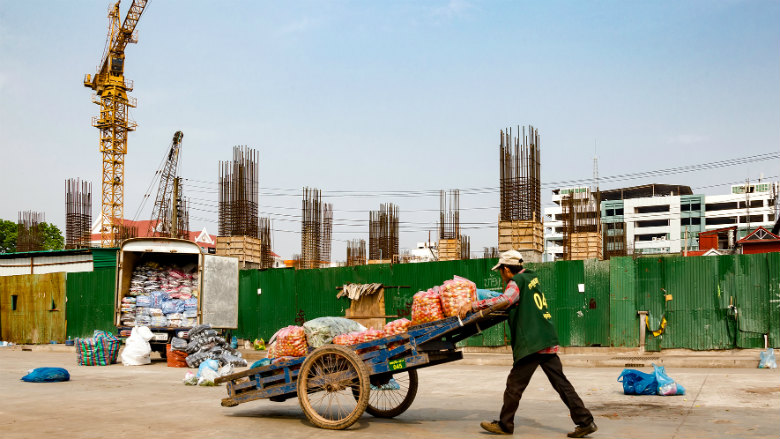Key Findings
- The Lao PDR economy is estimated to have grown at around 7% in 2016, a slight decline from the previous year, and is expected to maintain this growth rate from 2017-2019.
- Upcoming power projects and growing opportunities in the non-natural resources sector from closer regional integration are key drivers for growth.
- The services sector is expected to benefit from tourism associated with improved air transport connectivity, retail trade, and recent entrants in the insurance sector.
- However, external risks to the Lao PDR economy have increased. Greater disturbances in the region could affect Lao PDR’s main economic partners and lower external demand and investment inflows.
- Inflation pressures remain low, though prices increased in the second half of last year as oil prices recovered.
- The fiscal deficit widened significantly in fiscal year 2015/2016 to 6.2% of GDP, compared to below 4% of GDP in previous years. Revenues are expected to have declined to 19% of GDP, due to lower commodity and oil prices and grants.
- Total public debt was estimated at around 68% of GDP in 2016, increasing the debt distress from moderate to high in the recent World Bank/IMF Debt Sustainability Analysis.
- Monetary policy was directed towards stimulating credit growth, with some success as credit growth picked up to around 20% in September 2016.
- The banking sector continued to expand, but some banks still face low capital buffers and weak loan portfolios. Only one-fifth of the banks have return on assets of around 2% or above.
- The official Lao kip exchange rate depreciated only slightly against the US dollar. Still, with limited international reserves, pressures emerged on the exchange rate.
- The current account deficit improved in 2016 as higher exports of electricity and manufactured products and lower fuel import prices offset the impact of lower copper prices and decline in timber exports.
- A wider tax base will be necessary as well as improved tax administration. It should be coupled with improved efficiency in public spending. The revised Budget Law and expected Public Debt Law will also support this objective.
- Ensuring that the debt burden remains sustainable will require adherence to the announced reduction of the fiscal deficit and strengthened public debt management.
- Adjustments in monetary and exchange rate policies, coupled with strengthening the bank supervision capacity of the Bank of Lao PDR (BOL) would help in maintaining stability.
The Lao Economic Monitor 2017 features a thematic section on health sector financing in Lao PDR. Although the country has achieved strong economic development during the last decade, higher investment in human development, particularly health services, has become a priority.
- Despite recent increases in the government health budget, government expenditure on health per capita is among the lowest in the region, with high levels of out of pocket spending.
- Total government spending on health was about $182 million in fiscal year 2013/2014, or about 6.3% of total government spending.
- Public spending on health per capita was very low at $16 in 2014, much lower than neighboring Vietnam ($77) and Thailand ($177).
- This has resulted in slow progress improving health outcomes such as maternal and child mortality. In Lao PDR, maternal mortality is still at 214 per 100,000 live births in 2014. In addition, undernutrition remains a significant challenge with 44% of children under 5 years old stunted in 2011.
- Most government health spending has been allocated to wages and capital expenditure, with very little for critical non-wage recurrent spending, including purchasing health-related commodities to financing the implementation of plans. At the same time, Lao PDR has been substantially dependent on external finance in the health sector.
- Low government spending causes a low level of protection against financial risk for the population, due to a high level of out of pocket expenditure.
- The report provides suggestions on health sector financing policy in order to make greater progress toward Universal Health Coverage and improving health outcomes. Increasing government spending on health services, especially from domestic revenue sources, will be necessary.
